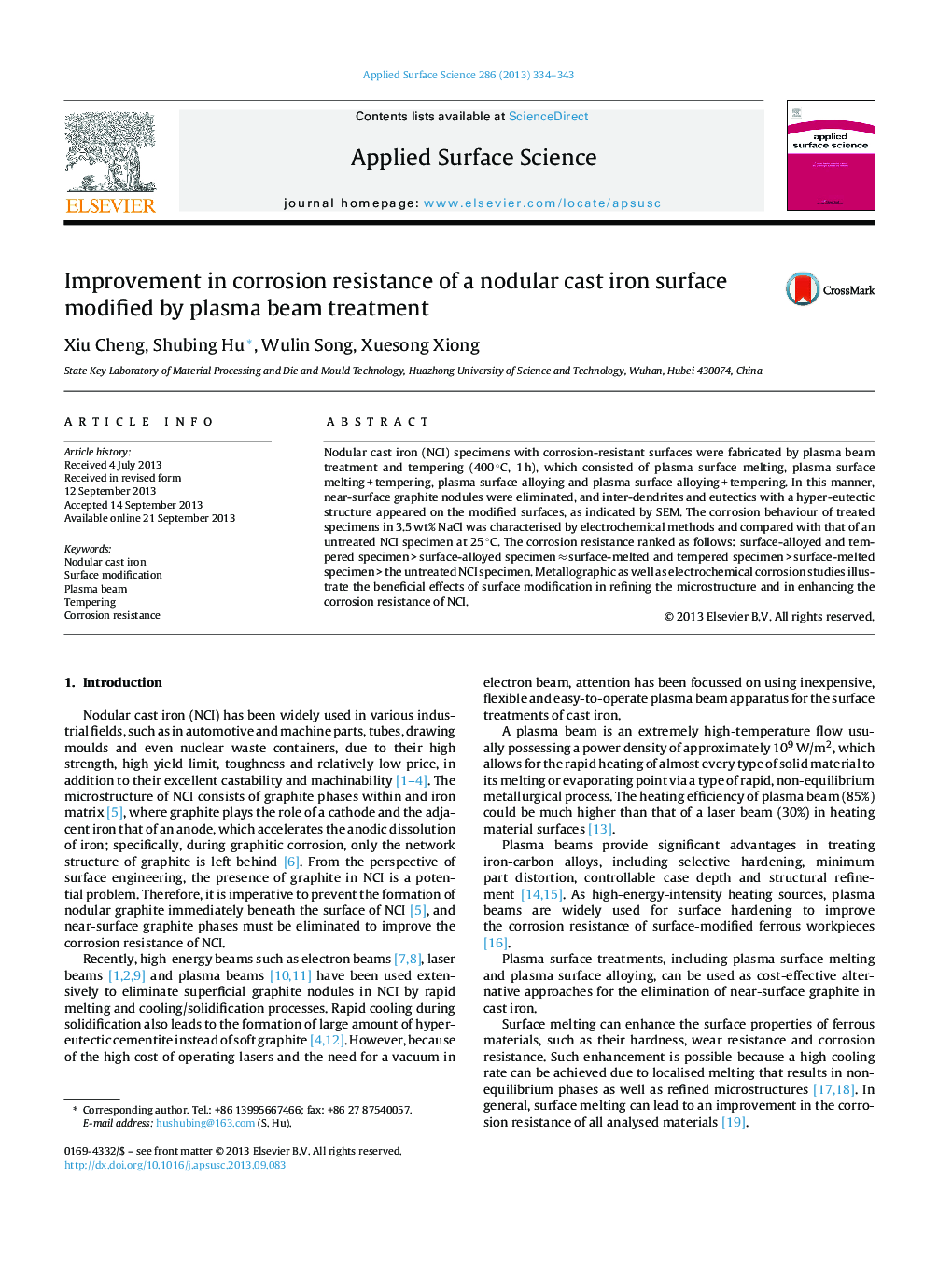| Article ID | Journal | Published Year | Pages | File Type |
|---|---|---|---|---|
| 5352114 | Applied Surface Science | 2013 | 10 Pages |
Abstract
Nodular cast iron (NCI) specimens with corrosion-resistant surfaces were fabricated by plasma beam treatment and tempering (400 °C, 1 h), which consisted of plasma surface melting, plasma surface melting + tempering, plasma surface alloying and plasma surface alloying + tempering. In this manner, near-surface graphite nodules were eliminated, and inter-dendrites and eutectics with a hyper-eutectic structure appeared on the modified surfaces, as indicated by SEM. The corrosion behaviour of treated specimens in 3.5 wt% NaCl was characterised by electrochemical methods and compared with that of an untreated NCI specimen at 25 °C. The corrosion resistance ranked as follows: surface-alloyed and tempered specimen > surface-alloyed specimen â surface-melted and tempered specimen > surface-melted specimen > the untreated NCI specimen. Metallographic as well as electrochemical corrosion studies illustrate the beneficial effects of surface modification in refining the microstructure and in enhancing the corrosion resistance of NCI.
Related Topics
Physical Sciences and Engineering
Chemistry
Physical and Theoretical Chemistry
Authors
Xiu Cheng, Shubing Hu, Wulin Song, Xuesong Xiong,
